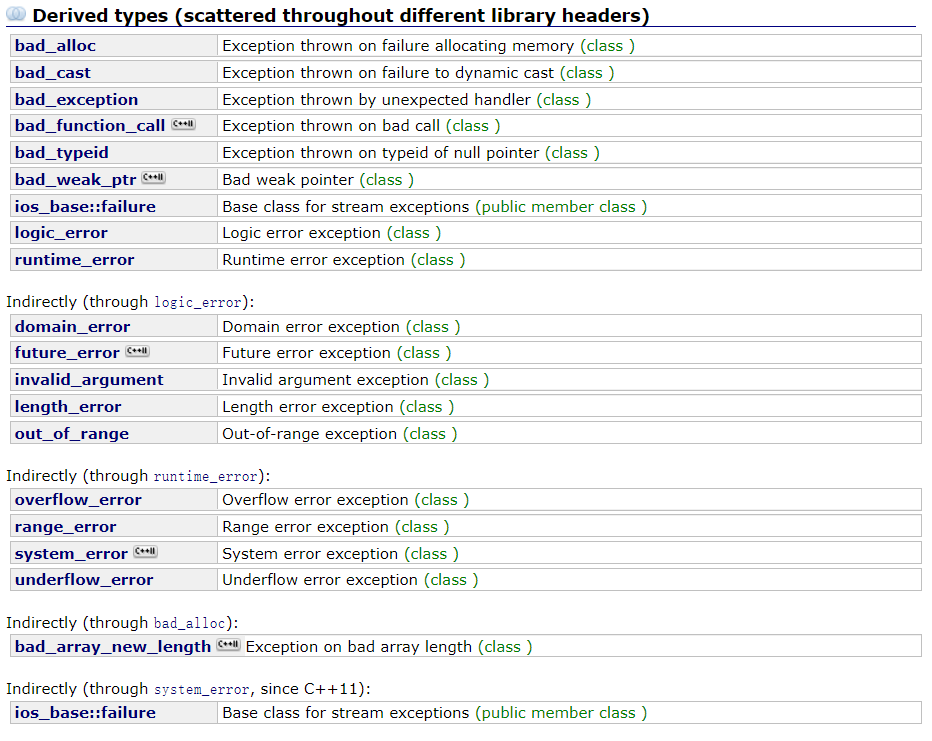C++ 异常exception
Exceptions provide a way to react to exceptional circumstances (like runtime errors) in programs by transferring control to special functions called handlers.
异常的默认catch句柄
If an ellipsis (...) is used as the parameter of catch, that handler will catch any exception no matter what the type of the exception thrown. This can be used as a default handler that catches all exceptions not caught by other handlers:
try {
// code here
}
catch (int param) { cout << "int exception"; }
catch (char param) { cout << "char exception"; }
catch (...) { cout << "default exception"; }
/*
output:default exception
*/
嵌套的异常
It is also possible to nest try-catch blocks within more external try blocks. In these cases, we have the possibility that an internal catch block forwards the exception to its external level. This is done with the expression throw; with no arguments. For example:
try {
try {
// code here
}
catch (int n) {
throw;
}
}
catch (...) {
cout << "Exception occurred";
}
标准库中what()
The C++ Standard library provides a base class specifically designed to declare objects to be thrown as exceptions. It is called std::exception and is defined in the
// using standard exceptions
#include <iostream>
#include <exception>
using namespace std;
class myexception: public exception
{
virtual const char* what() const throw()
{
return "My exception happened";
}
} myex;
int main () {
try
{
throw myex;
}
catch (exception& e)
{
cout << e.what() << '\n';
}
return 0;
}
标准库中的异常类型




 浙公网安备 33010602011771号
浙公网安备 33010602011771号